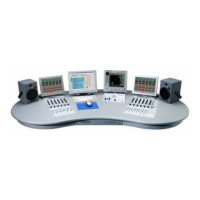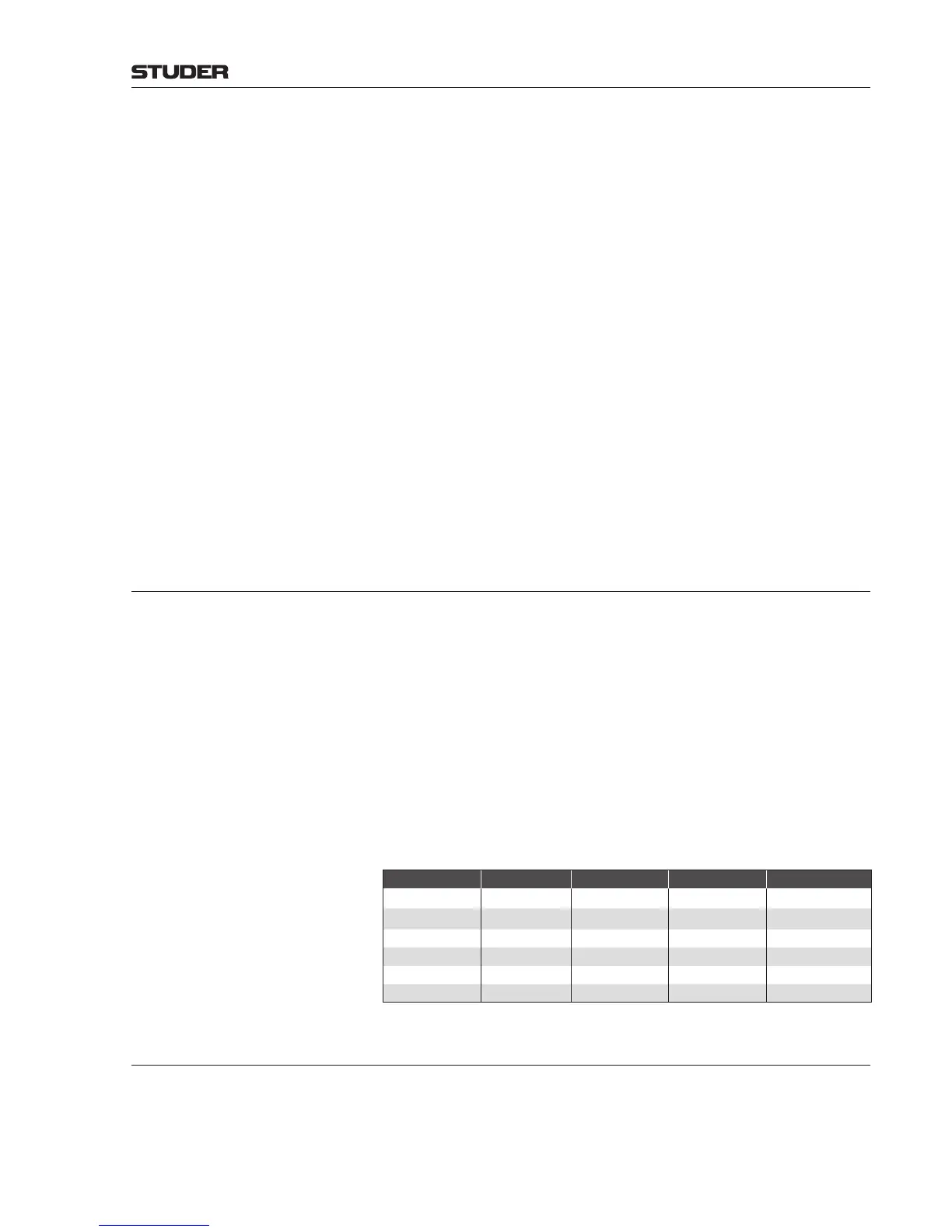OnAir 3000 Digital Mixing Console
Operation 5-123
Document generated: 10.10.14
SW V6.0
• Core(containerID=10)
• DeskA(containerID=100)
• DeskB(containerID=150)
• ConfigTool(i.e.,theremoteconfigurationtool)(containerID=20)
A user called ‘Operator’ is logged in on Desk A, while a user called ‘DJ’ is
logged in on Desk B. At the same time the system administrator ‘Admin’ is
running the Config Tool on his laptop.
From the technical point of view, each container has its own ‘current user
ID’ parameter that it is set by the configuration tool at startup and by the user
GUI on log-in of a user.
Since the ‘current user ID’ parameter is initialized to the ‘Default’ user per
default and normally neither the user GUI nor the configuration tool are run-
ning on the core, the core’s current user ID remains at ‘Default’.
In cases where no user GUI is available at all in a system, the desk driver part
of the software may also run within the core container. For this purpose the
administrator gives the ‘default’ user the appropriate privileges in order to
guarantee the desired functionality of the available desk elements, since the
desk driver will not affect the ‘current user ID’ parameter.
5.10.3 Users
The default number of users is 20. This number is defined in the user.
xml file and may be up to 64; it cannot be changed during runtime. If more
than 64 users are required, the system must be setup in such a way that the
user management is running on a separate computer (see chapter 5.10.9). The
maximum number of policies is 4096.
The first user is the system administrator (Admin), the second user is the
default user (Default), all following users are ‘ordinary’ users (User3...).
The system administrator has a special, unrestricted ‘Admin’ policy that
cannot be modified. The default user also has his special ‘Default’ policy that
may, however, be modified. For reasons of simplicity and reliability, both the
admin and default users have one single, fixed policy only.
The default configuration settings are as follows:
User Name Password User Valid Policies
User 1
Admin
admin Yes Admin (policy 1)
User 2
Default
- Yes Default (policy 2)
User 3 User 3 - No Policy 3
User 4 User 4 - No Policy 3
... ... - No Policy 3
... ... ... ... ...
5.10.4 Privileges
A user GUI page or a console parameter group has a flag indicating whether
it can be accessed or not; the flag values are ‘Grant’ and ‘Deny’ (i.e., access
to the corresponding page or parameter group is granted or denied). The
privileges are checked on every access.
In case of A/B desk configurations where two desks share the same Core’s

